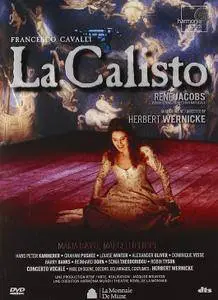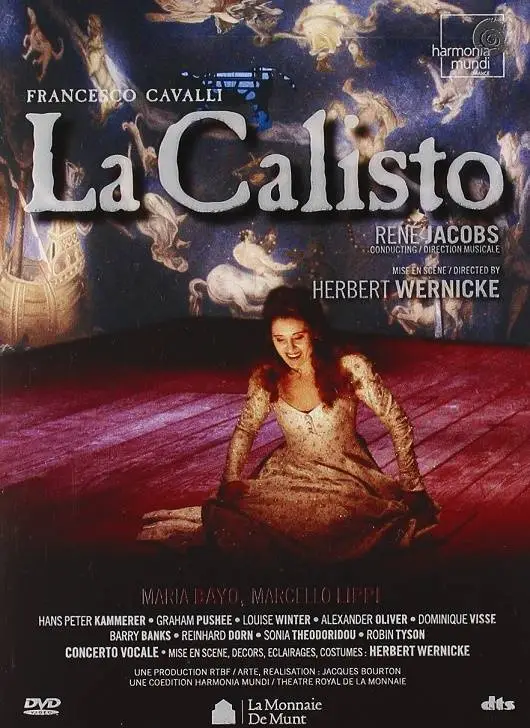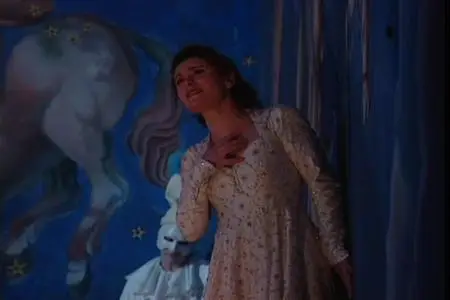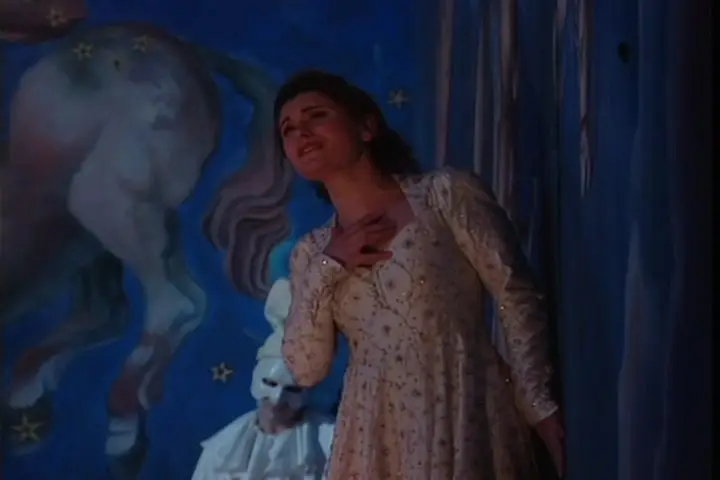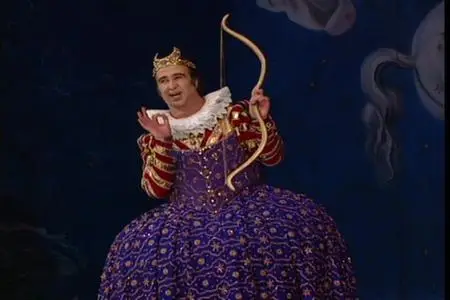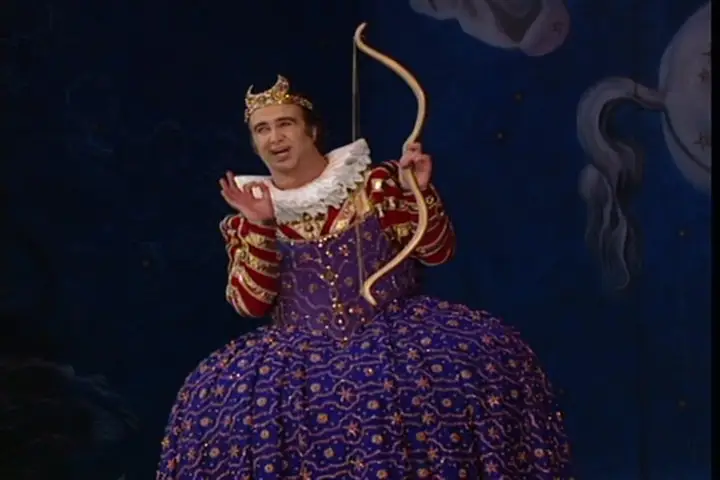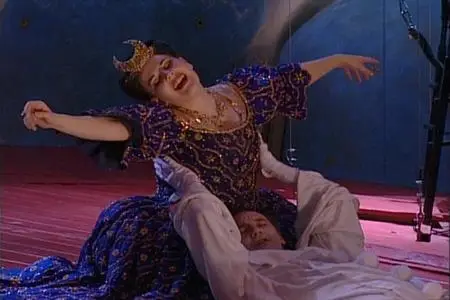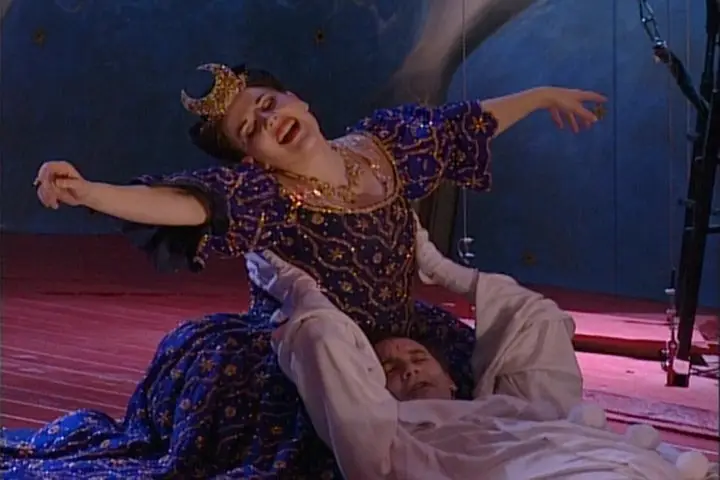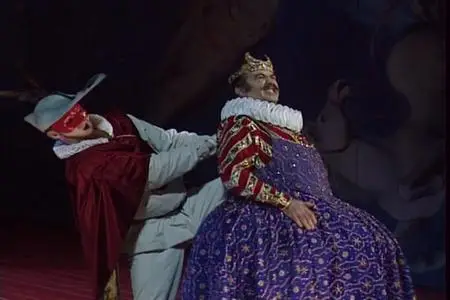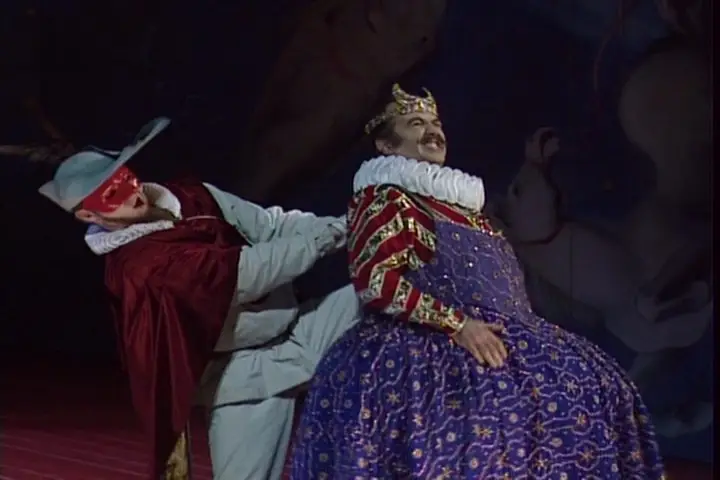René Jacobs, Concerto Vocale - Francesco Cavalli: La Calisto (2006)
NTSC 4:3 (720x480) | Italiano (LinearPCM, 2 ch) | Italiano (DTS, 5 ch) | 232 min | 7.19+6.11 Gb (2xDVD9)
Classical | Label: Harmonia Mundi | Sub: Italiano, Francais, English, Deutsch, Nederlands | Recorded: 1996
NTSC 4:3 (720x480) | Italiano (LinearPCM, 2 ch) | Italiano (DTS, 5 ch) | 232 min | 7.19+6.11 Gb (2xDVD9)
Classical | Label: Harmonia Mundi | Sub: Italiano, Francais, English, Deutsch, Nederlands | Recorded: 1996
Cavalli was the leading composer of opera in Venice during the 1650s, and Calisto (which premiered in November 1651) finds him at the height of his powers. Giovanni Faustini’s mythologically based libretto for Calisto tells the story of the amorous trials of two couples: Calisto, a female devotee of the goddess Diana, and her pursuer, Jove; and Diana herself, and the shepherd Endymion. As a follower of Diana, Calisto has rejected carnal relations with men; as a result, in order to win her affection, Jove disguises himself as Diana, and Calisto willingly follows him in that guise to enjoy carnal pleasure. Calisto’s actions invoke the wrath of both Diana herself, and of Jove’s wife Juno. According to the myth, Calisto is transformed into a bear, and will later ascend to the firmament as the constellation Ursa Minor. Diana, in Faustini’s version, finally admits to loving Endymion; they remain devoted to each other, but their relationship remains unconsummated.
The Jacobs production, directed by the late Herbert Wernicke, is built around a set that displays allegorical representations of the constellations; most strikingly, at the conclusion of the opera the set darkens, the stars become visible, and Calisto ascends to take her place in the heavens. The three walls of the set remain constant throughout the opera; most of the characters enter and leave through trap doors, or, in the case of the gods, descend from the heavens. Another visually stunning moment finds the parched Calisto (whose thirst derives from the environmental devastation brought about by the fiery fall of Phaeton) relishing an immense silvery fabric that represents the stream created by Jove at the beginning of the first act.
For the most part, Jacobs and Wernicke read Calisto as a comedy, and extend this sense of comedy by having most of the characters represent stock figures from the commedia dell’arte. Thus Jove bears the attributes of the blustery “Captain”; Endimione is Pantaleone, while Satirino assumes the nature of Harlequin. Wernicke further exploited themes of comedy and vulgarity through graffiti (both sexually explicit and more generic) and a number of stage actions.
In any staging of Calisto, the musical director must make an important casting decision, because the music for Jove “disguised as Diana” is notated for a soprano, not in the lower vocal range Jove normally sings in. This presents two options in performance: either Jove himself will sing in falsetto, or the singer who plays Diana will appear as Jove-in-Diana, making Jove’s transformation all the more deceptive. Jacobs and Wernicke chose the first option, and this decision inevitably governed many other aspects of the opera. In this production, then, Jove-as-Diana is truly a comic figure; the audience sees “Jove,” not “Diana,” and we are meant to read the seduction as just more of the comic business that pervades the production.
Many of Jacobs’s musical decisions regarding the score of Cavalli’s opera are similar to those he has made in other recordings of seventeenth-century opera. Like the director Wernicke, Jacobs aims to present Baroque opera not as a “museum piece,” but as a medium that will appeal directly to modern audiences. As a result, he transforms Cavalli’s score into something more akin to late Baroque music: the orchestra is heavily expanded with wind and brass instruments, and it plays frequently (we know from contemporary accounts that Cavalli’s orchestra was quite small, with just a few string and continuo players). Moreover, additional music, some of it by other composers, has been inserted to cover “scenery” changes. In Cavalli’s original score, however, the string orchestra rarely accompanies the singers; as a result, when it does play, the musical and dramatic sense of the work is heightened. While Jacobs’s band offers some unaccompanied recitative, much of the score is orchestrated. Admittedly many modern players might be reluctant to take a job where they play so little, but there is precedence for adhering more to the composer’s original intentions. In any event, the result of Jacobs’s tinkering produces a vibrant, rich score, but one that would have been entirely unfamiliar (and perhaps unconceivable) to Cavalli in 1651.–Opera Today
Performer:
Calisto/Eternita - Maria Bayo
Gioce - Marcello Lippi
Mercurio - Hans Peter Kammerer
Endimione - Graham Pushee
Diana/Destino - Louise Winter
Linfea - Alexander Oliver
Satirino/Furia - Dominique Visse
Pane/Natura - Barry Banks
Silvano - Reinhard Dorn
Jiunone - Sonia Theodoridou
Furia – Robin Tyson
Concerto Vocale
Conductor - René Jacobs
Mise en scène: Herbert Wernicke


